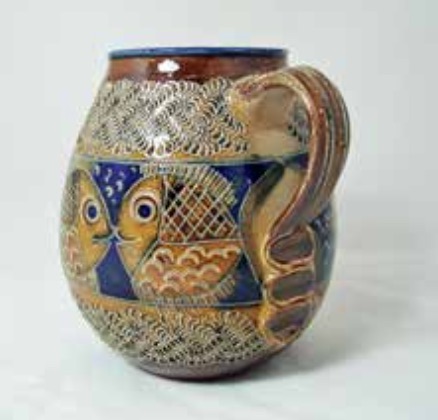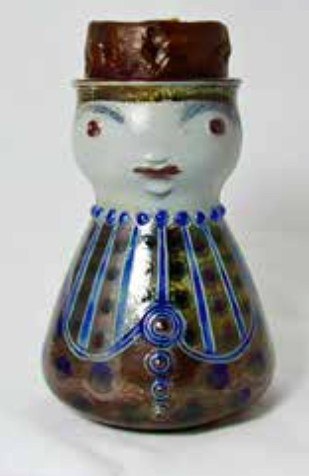Start a new collection at Harrogate
Highlights of German studio pottery, called the ‘next discovery’ among collectors, will be on show by well-known Yorkshire specialist in antique pottery and porcelain, John Newton, at The Pavilions of Harrogate Antiques & Art Fair in June.

While John has many years specialising in traditional English and European porcelain, which he also continues to sell, he now concentrates on a type of salt-glazed studio pottery with distinctive colours of grey and cobalt blue. The pottery takes its name from the Höhr-Grenzhausen and Ransbach-Baumbach area known as Westerwald, about half-way between Frankfurt and Cologne, in Rheinland-Pfalz.
With this kind of stoneware pottery much more difficult to find, prices are beginning to rise and demand for the most interesting pieces is increasing.
Salt-glazed stoneware is thought to have its origins in the work of Dutch potters who used the wood from old barrels discarded by herring fishers to fire their kilns and then discovered their unglazed pots emerged covered by a glass-like shine. The technique spread to the UK in the 17th century and was later taken up by such companies as Doulton.

The Rhineland area of Germany provided the most essential ingredient to the development of the ceramic industry: the purest clay quarries in Europe and massive forests and basalt mines made the area ideal for pottery production.
John, who once ran antiques fairs of his own in Harrogate, has built a significant following of buyers for a collecting area that has never been promoted or widely recognised in the UK. Prices start at the low

hundreds for smaller items. Almost all the pieces he sells are by known and recorded studio potters, which makes it easily identifiable and therefore more attractive for today’s collectors who value a strong and appealing back story.
Elsewhere at the Fair, which takes place from June 2-4 at the Yorkshire Showground, showing for the first time will be WR Harvey Antiques from Witney, well-known specialists in fine Georgian and Regency furniture. Harvey’s will be showing a fine and rare Queen Anne period figured walnut Double Dome top Bureau Bookcase. The piece first sold at the old Great Northern Antiques Fair in Harrogate in 1977 – when it was priced at £12,500. Now it is priced at £50,000 and has been bought and sold by Harvey several times in the intervening 40 years.
Additional exhibits from WR Harvey will be a superb oil on canvas landscape painting by the highly sought after Yorkshire artist Edward H. Niemann Jnr (1813-1876 ) of Knaresborough Castle ruins above the river Nidd and Aquaduct, priced at £12,500.
